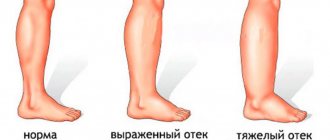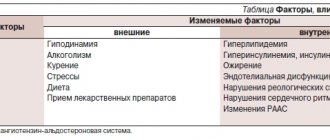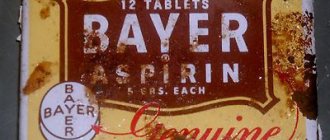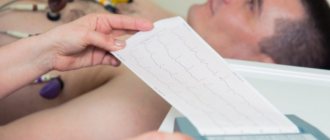Prices for services
Initial appointment with a proctologist (assessment of patient complaints, medical history, external examination of the anus, digital examination of the rectum, anoscopy if indicated)
Primary appointment – visiting a doctor of a specific specialty for the first time. Make an appointment
1500 ₽
Repeated appointment with the proctologist
Make an appointment
700 ₽
There are four stages of chronic internal hemorrhoids:
- At the first stage, hemorrhoidal veins protrude into the anal canal, but do not fall out (internal hemorrhoids);
- At the second stage, the nodes already fall out, but at the same time they are independently retracted into the anus;
- The third stage of hemorrhoids is characterized by the need for the patient to reduce the hemorrhoids by hand after bowel movements or physical activity;
- The fourth stage - the fallen nodes are not reduced.
The treatment strategy for hemorrhoids is determined by the stage of the disease.
Surgery for hemorrhoids
Hemorrhoids are a common proctological disease associated with dilation of the veins in the anus and the formation of hemorrhoids. It occurs predominantly in older males and in women during pregnancy. The development of pathology is often caused by weakness of the venous walls of the rectum; this condition is hereditary.
Many of us lead a sedentary lifestyle, which is greatly facilitated by working in an office. We rarely think about the fact that lack of mobility can lead to such an unpleasant illness as hemorrhoids.
According to all-knowing statistics, a quarter of the adult population of our planet suffers from hemorrhoids in various forms. You don't want to be included in this number, do you? Analyze whether you are at risk. You are at risk if you have a sedentary lifestyle and do not have time to exercise. Let's together try to understand in more detail what hemorrhoids are, what is their prevention and what is the treatment of hemorrhoids.
Symptoms of hemorrhoids
Hemorrhoids can develop for many reasons. Here are the main reasons that can lead to the development of hemorrhoids:
- Poor nutrition (abuse of fatty, spicy foods)
- Alcohol abuse
- Excess weight
- Excessive physical activity, which may increase intra-abdominal pressure
- Prolonged diarrhea
- Anal sex
Hemorrhoids do not appear suddenly, they begin in stages. One of the first signs that doctors recommend paying attention to is the occurrence of mild itching in the anus. After some time, the itching will be accompanied by pain when defecating. These symptoms may be present in the patient for many years without causing him too much concern. Evidence that hemorrhoids have entered the acute stage is the detection of drops of blood in the stool.
Our recommendation: if you find blood in your stool, you should immediately consult a proctologist. Treatment of hemorrhoids should begin as early as possible! Blood in the stool may indicate not only an exacerbation of hemorrhoids, but also possible malignant formations in the intestines.
The appearance of drops of blood during bowel movements is only the initial stage of the disease, then hemorrhoids will begin to prolapse.
ONLINE CONSULTATIONS
We treat where it is convenient for you
MORE DETAILS
What is a hemorrhoid?
Proctologists distinguish four stages of development of this disease. Treatment of hemorrhoids is determined by its stage. It is formed because the veins in the anus begin to swell and expand. Hemorrhoids are varicose veins of the rectum. Due to the indicated reasons (excess weight, poor diet, constipation, etc.), a violation of the venous outflow occurs, as a result of which a hemorrhoidal node is formed. Hemorrhoidal bleeding occurs due to inflammation and thinning of the walls of the nodes. The walls of the nodes often become inflamed; it should be remembered that the anus is a delicate place, and feces irritate the walls. As a result of irritation, the hemorrhoid begins to bleed.
- In the first phase of the disease, the patient experiences pain before and after defecation and periodic bleeding.
- In the second stage of the disease, hemorrhoidal nodes that emerge when the abdominal muscles are tense are added to the bleeding that occurs. At this stage of the disease, the nodes move into place on their own.
- At the third stage, hemorrhoids fall out after each bowel movement. Adjusted only with the help of hands. With further development of the disease, the nodes fall out with every lifting of weights and even with a strong cough.
- When the disease reaches the fourth stage, hemorrhoids fall out even in a calm state and fall out almost immediately after the node is set in place. Frequent severe bleeding begins, and thrombosis develops rapidly.
Diagnosis of hemorrhoids
Proctologists diagnose hemorrhoids in three main ways: they perform a digital examination, anoscopy and sigmoidoscopy.
When conducting a digital examination, the proctologist carefully inserts a finger into the anus and palpates the rectum, trying to assess how much its walls are stretched. Next, the proctologist examines the contents of the rectum - the presence of blood, pus, feces, mucus, etc. After a digital examination, the proctologist performs an anoscopy.
The patient is given a cleansing enema (microlax), after cleaning the rectum, an anoscope is inserted into the anus to a depth of 6-8 cm. An anoscope is a small special device, with its help the proctologist examines the patient’s rectum. Anoscopy can detect polyps, malignant neoplasms, fissures and hemorrhoids.
Treatment of hemorrhoids
Sigmoidoscopy is considered a more accurate and modern type of rectal diagnosis. This method makes it possible to examine the rectum with a length of 25-30 cm from the anus. The rectoscope is equipped with a special optical device that can be used to detect any, even the most minor, changes occurring in the patient’s rectum. The next step after establishing an accurate diagnosis is to follow all the recommendations of the attending physician; he will select an individual hemorrhoid treatment regimen for the patient.
You can begin treatment for hemorrhoids at any phase of the disease, but it is still better not to delay seeing a doctor, because the sooner the sufferer turns to a proctologist for help, the more successful and easy the treatment will be.
The acute stage of hemorrhoids can occur suddenly, for example, from sudden lifting of weights or from a violation of the diet. At this stage, treatment of hemorrhoids is aimed at relieving acute manifestations of the disease (thrombosis, bleeding, inflammation, etc.). After the disappearance of acute symptoms, the patient is advised to refrain from lifting heavy objects, strenuous exercise, and be sure to follow the diet recommended by the proctologist.
In cases where hemorrhoids become chronic and remission is often followed by unexpected acute exacerbations, several hemorrhoid treatment methods may be prescribed. In the initial stages of the disease (stage 1-2), when the patient suffers from an unpleasant burning sensation in the anus and minor bleeding, the proctologist will prescribe medication for hemorrhoids. If the disease is not neglected and treatment is started on time, follow the doctor’s recommendations (take prescribed medications, avoid fatty and spicy foods, lead an active lifestyle, try not to sit too long, do not lift heavy objects with sudden jerks, do not engage in anal sex), then these tips will help the patient increase the intervals between exacerbations of the disease. To reduce pain, a variety of gels, ointments and special medicinal suppositories are prescribed. If the pain is unbearable, the doctor will perform a medical anesthesia of the anus - several injections of a modern anesthetic are made into the tissue near the anus.
In the treatment of hemorrhoids, one cannot do without drugs that prevent thrombosis, bleeding, relieve pain and inflammation. To prevent these symptoms, a proctologist may recommend suppositories and ointments: Ultraproct, Anuzol, Hepatrombin, Proctosedyl, Proctoglivenol, Proctosan, etc. These medications relieve pain and relieve inflammation, dissolve blood clots, strengthen the walls of hemorrhoidal vessels and prevent the exacerbation of the disease.
To achieve an effective result, the treatment of hemorrhoids must be comprehensive, combining the use of several drugs aimed at eliminating pain, stopping bleeding, and improving the health of the veins.
In cases where long-term drug treatment of hemorrhoids has not brought results, it is necessary to move on to other methods of treating hemorrhoids.
Minimally invasive methods for treating hemorrhoids
The patient is given a small cleansing enema. Then the doctor takes a ligator, onto the working part of which a latex ring is put. The hemorrhoidal node is pulled into the ligator, the ring is put on the base of the node and tightened. After about 2-3 days, the hemorrhoidal node falls off along with the latex ring. In its place there remains a wound that quickly heals on its own. In one session, only 1-2 rings can be placed, and if the patient has 3 or more hemorrhoids, then after 2-4 weeks the procedure for ligating the hemorrhoids has to be repeated. This step-by-step treatment of hemorrhoids can take up to 1-2 months. The advantages of the method of ligation of hemorrhoids are: low pain and low trauma, bloodlessness, without the need for general anesthesia, hospitalization and interruption of the patient’s professional activity. These methods make it possible to cure hemorrhoids of stages 1-3. By applying latex rings, hemorrhoids are eliminated.
As a method of choice, for hemorrhoids of stages 1-2, sclerotherapy is sometimes performed - a solution of ethoxysclerol is injected into the hemorrhoid, which causes emptying, gluing and sclerosis of the hemorrhoid. This method is used when drug treatment is not effective. After sclerotherapy, doctors recommend following the recommendations: reduce physical activity, stick to a diet, and do not sit for too long.
Modern minimally invasive technologies such as disarterization of hemorrhoids under Doppler ultrasound control (HAL-RAR) and destruction of hemorrhoids using laser have significantly reduced the trauma and pain of operations, shortened the postoperative recovery period and improved the results of hemorrhoid treatment. Our experience has shown that when combining HAL-RAR methods and destruction of hemorrhoids using a laser, it is possible to obtain good results in the treatment of stage 3 and 4 hemorrhoids in a low-traumatic manner, with a short recovery period.
Hemorrhoidectomy
This is the removal of hemorrhoids through surgery.
Hemorrhoidectomy is used for advanced hemorrhoids (stages 3 and 4). Using a scalpel, scissors, and electrocoagulation, hemorrhoids are removed. The use of modern technologies, Ligasure, ultrasonic scissors, reduced the trauma and operation time. This operation is performed under general or spinal anesthesia for 30-60 minutes.
At the site of the removed node, several small wounds are formed, which subsequently heal with the help of conservative therapy (rectal suppositories, ointments, baths). In addition, painkillers and laxatives are prescribed to normalize stools and facilitate bowel movements after surgery.
The positive outcome of the operation has been observed for several years. But if you do not adhere to medical recommendations, hemorrhoids may begin to develop again.
Only a proctologist can figure out which treatment method is right for the patient.
Prevention of hemorrhoids
To prevent hemorrhoids from developing, perform water procedures more often. Taking a warm bath improves blood microcirculation. We must not forget about personal hygiene after defecation. It is necessary not only to use multi-layer toilet paper, but also to wash with cool water. Long-term constipation can lead to the formation of anal fissures, which can develop into hemorrhoids. Diarrhea is no less dangerous than constipation - there is a disturbance in the intestinal microflora, as a result of which an infection can be introduced into the walls of the colon. Doctors advise following a balanced diet, carefully monitoring your stool, and periodically taking medications that help normalize the intestinal microflora.
To prevent the development of hemorrhoids, doctors advise not to strain during bowel movements. The fact is that increased muscle tension can also lead to bleeding and the development of cracks. You also need to beware of hypothermia - it can cause exacerbation and development of acute hemorrhoids.
People who have already encountered problems with hemorrhoids should always adhere to a balanced diet and exclude spicy foods and alcoholic drinks from their diet. Alcohol and excessive consumption of spices increase blood flow to the anus, and this can lead to severe bleeding. Hemorrhoids are considered an occupational disease of drivers. So for those who spend a lot of time driving, we recommend taking breaks more often and not neglecting physical exercise.
You should not self-medicate - as soon as you suspect that you are starting to develop hemorrhoids, you should immediately consult a specialist. Only a proctologist will be able to reliably establish a diagnosis and determine what kind of hemorrhoid treatment is necessary for you.
You can make an appointment with a doctor by phone, through an online appointment or in a mobile application.
What does external hemorrhoids mean?
External hemorrhoids are characterized by prolapse of hemorrhoids with the impossibility of their reduction into the anus.
Acute external hemorrhoids
Sudden appearance of formations in the anal area.
Thrombosis is a painful, dense, dark blue formation in the area of the hemorrhoid, caused by impaired nutrition and circulation of the pathologically enlarged vein.
Stages of acute external hemorrhoids:
- Thrombosis of hemorrhoids without signs of inflammation;
- Thrombosis with inflammatory reaction;
- Thrombosis of nodes with their severe inflammation and its transition to subcutaneous fat, swelling of the skin in the anus, necrotic lesions of the mucous membrane of hemorrhoids.
Therapy methods
The specialists of the proctology department of the Global Clinic have at their disposal several methods of treating the disease at all stages of its course. The following treatment options are used at Global Clinic:
- infrared photocoagulation (cauterization of the hemorrhoid). Used to treat stage 1 hemorrhoids;
- sclerotherapy (the venous tangle is treated with a special solution for its destruction). Used to treat stage 1-2 hemorrhoids;
- latex ligation (latex rings are placed on the base of the vascular formation). Used to treat stage 1-2 hemorrhoids;
- radio wave therapy (using radio waves). Shows its effectiveness at all stages of disease progression;
- laser vaporization with desarterization of formation - effective at stages 2-3 and less often at stages 4;
- at stage 4, hemorrhoidectomy in various modifications.
Diagnosis of acute external hemorrhoids
The process of diagnosing acute external hemorrhoids includes:
- interviewing the patient regarding existing complaints, collecting anamnesis of life and illness;
- external and internal digital rectal examination by a coloproctologist;
- if possible: anoscopy, sigmoidoscopy;
- additional methods: fibrocolonoscopy, rectal ultrasound, laboratory tests, specialist consultations.
During an external examination, the condition of the skin of the perianal area, the tone of the anal sphincter, the shape, the presence of scar changes and deformities of the anus, the presence of formations, and fistulous openings are assessed.
When assessing hemorrhoids, attention is paid to their severity, the presence of contact bleeding, ulceration, and pain.
Classification of local drugs
Pharmaceutical companies produce several large groups of medications that are intended to suppress the symptoms of external hemorrhoids. Each type has its own spectrum of action. The list is presented:
- Venotonics - active ingredients increase the density of vascular walls, normalize capillary permeability. Due to them, there is an increase in the tone of the muscle tissue of the veins, and blood circulation is stabilized.
- Anticoagulants – medications used to treat blood clots. The active components are responsible for reducing the rate of blood clotting and preventing the formation of new blood clots.
- Hemostatics and coagulants - medications accelerate the process of blood clotting. Used to quickly stop bleeding from damaged tissues.
- Antispasmodics – relieve the symptoms of muscle spasms that provoke pain. They are used in the early stages of the pathological process; suppositories are a common form of release.
- Immunomodulators - due to active components, the functioning of the immune system improves. As a result, the body resists pathogenic microflora and easily suppresses outbreaks of infection and inflammation.
Complex therapy involves the use of several additional medications that do not affect hemorrhoidal disease. Anti-inflammatory drugs stop inflammation, antimicrobial drugs reduce the risk of secondary infection. Painkillers are used to suppress severe pain.
Treatment of acute external hemorrhoids
The choice of the most effective method of treating hemorrhoids depends on the clinical picture of the disease and concomitant pathologies in the patient.
- Surgery:
- thrombectomy
- excision of the hemorrhoid (possibly on an outpatient basis under local anesthesia)
- Conservative therapy:
- Drug treatment:
- painkillers (ointments, suppositories);
- combination drugs that have anti-inflammatory, astringent, decongestant and regenerating effects;
- use of heparin-containing agents (thrombolytic and hemostatic effects);
- prescription of venotonic drugs, mild laxatives.
- Lifestyle correction: giving up toilet paper (rising shower), caring for the perianal area and perineum, diet, work and rest.
Make an appointment
The duration of rehabilitation after surgical treatment is determined by the volume of surgical measures performed and the initial characteristics of the pathology in each patient.
Causes of combined hemorrhoids
The basis of combined hemorrhoids is the accumulation of special cavernous veins (corpuscles) of the rectum, which have multiple arteriovenous anastomoses and are filled with arterial blood. The anatomical basis for the formation of cavernous bodies of the rectum and hemorrhoids are the terminal branches of the rectal artery on the right lateral, left anterolateral and left posterolateral walls of the anal canal, that is, in the projection of 3, 7 and 11 o’clock on the dial (with the body positioned on the back). In these areas of the anal canal, in the submucosal layer, groups of cavernous veins are formed, which are interconnected by anastomoses and collaterals.
The cavernous bodies of the rectum are thrombosed and filled with blood constantly, outside the act of defecation. They communicate with the normal veins of the rectal mucosa. With the slightest trauma (dense feces during constipation, straining during childbirth), the outer membrane of the thrombosed internal hemorrhoid ruptures and arterial bleeding occurs. Blood is released in scarlet drops or a tense scarlet stream, usually during or immediately after defecation. In most cases, bleeding stops on its own and does not lead to bleeding of the patient.
Rectal diseases often develop in adulthood. They are prone to chronicity. Combined hemorrhoids are accompanied by the appearance of painful formations in the lumen of the anal passage and beyond. Periods of remission are followed by relapses under the influence of provoking factors:
- Increased intra-abdominal pressure;
- Constipation;
- Lifting weights;
- Sedentary lifestyle;
- Spending long periods of time sitting;
- Compression of the rectum by the uterus enlarged during pregnancy.
When hemorrhoids worsen, an inflammatory process occurs, which involves both internal and external hemorrhoids. There is stagnation of venous blood. As a result, attacks of pain are repeated many times, and chronic constipation develops. This forces the patient to consult a doctor, since treatment of acute combined hemorrhoids is ineffective.
Prevention of acute external hemorrhoids
- timely treatment of the initial stages of hemorrhoids and minimally invasive treatment;
- maintaining a healthy lifestyle with the introduction of a rational diet, physical activity, and absence of sedentary work;
- elimination of chronic constipation (nutrition, drinking regime);
- compliance with the principles of personal and intimate hygiene;
- visiting a specialized specialist, conducting diagnostics when the first symptoms of hemorrhoids appear;
There are contraindications - specialist consultation is required!
Hemorrhoids 4 degrees
The patient's condition is rapidly deteriorating. Stage 4 hemorrhoids require immediate surgical intervention and removal of hemorrhoids. The advanced disease is characterized by pain when walking and even while sitting. Reduction of tumors into the anus is impossible.
Bleeding becomes profuse. As a result, anemia or anemia is diagnosed. The patient feels severe weakness, loss of strength, and lack of appetite. Blood clots form in the cavernous veins, which negatively affect the blood circulation process. Hemorrhoids become inflamed, thereby provoking the appearance of suppuration and necrosis, dead areas of soft tissue. Harmful bacteria spread throughout the body and worsen the condition.










